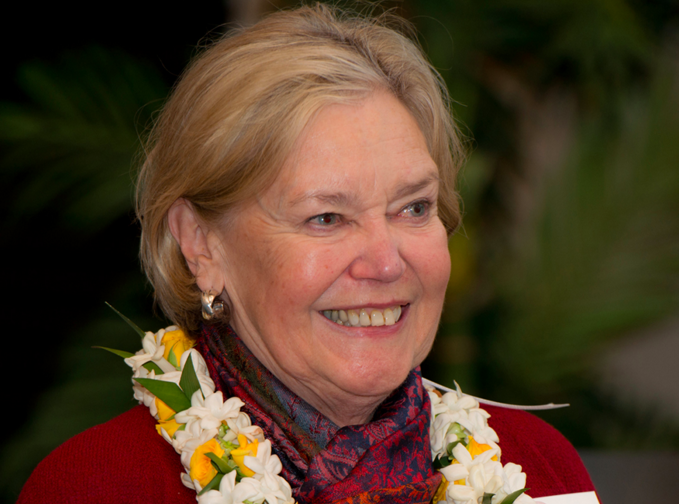
Milbrey McLaughlin awarded honorary degree from Swedish university
Milbrey McLaughlin, the founding director of the John W. Gardner Center for Youth and Their Communities at Stanford, was recently awarded an honorary doctorate by the University of Gothenburg, Sweden.
Eight hundred guests attended the conferment Oct. 16 of McLaughlin and 14 other international scholars at Svenska Mässan. With the honor, McLaughlin joins a distinguished group of individuals, including Hillary Rodham Clinton, who have been recognized by the university for significant contributions in research, the arts and society.
The degrees were conferred in a formal ceremony conducted in Swedish and Latin - men in white tie or national dress; women in evening gowns or national dress. Insignia associated with the honorary doctorate, rich with history and symbolism, consisted of a ring, a hat and a laurel wreath.
"It was truly wonderful to be a part of such an old tradition," McLaughlin said. "I'm incredibly honored."
The doctoral ring is worn on the left hand and is made of gold. The decoration is specific to different universities and faculties, but laurel and oak are common elements. Oak symbolizes strength and constancy. The honoree’s name and date of conferral are engraved inside the ring.
The hat symbolizes freedom and power, as only free men in Rome were permitted to wear hats. The hat’s gold clasp represents the symbols of the different faculties. As the doctoral hat has a hard frame, it does not mold itself to the head, but has to fit precisely, which meant McLaughlin experienced the centuries-old hatting technique of obtaining head measurements with a conformateur.
Laurel was used by the Romans in conjunction with triumphal processions and was presented as a victory sign at the Olympic Games. Laurel wreaths were also presented as a reward at the early universities. It has been a symbol for poets, and also signifies constancy and immortality.
McLaughlin joined the Stanford Graduate School of Education faculty in 1983. She launched the Gardner Center in 2000 to bring together a variety of community groups and government agencies, in addition to schools, that impact the health, emotions, social connections and safety of youth, as well as their education.
McLaughlin’s research has long focused on the “youth sector,” the broad web of institutions and organizations through which youth move from infancy to young adulthood. Her 1994 book, Urban Sanctuaries, chronicled one community-based organization’s success in providing Chicago’s Cabrini Green youth with a concrete alternative to gangs and school failure through support to succeed in school and opportunities to experience life outside the four square blocks of their neighborhood.
She is currently working on a 30-year follow up into the lives, accomplishments and families of the Cabrini Green youth she first met in 1994. The research provides a rare opportunity to see outcomes of a youth program over an extended period of time.



